Study of Holocene glacier degradation in central Asia by isotopic methods for long-term forecast of climate changes
Vladimir I. Shatravin , Tamara V. Tuzova
1. Tien-Shan Mountain Scientific Center, Institute of Water Problems and Hydro Power, National Academy of Sciences of the Kyrgyz Republic
1 Introduction
The problems related to global warming are becoming more acute and extend beyond the scope of nation-states,gaining regional and interregional dimensions. Of the world’s population, central Asian and African nations are considered to be particularly vulnerable to climate change.The global warming of the climate is leading to degradation of glaciers and, as a result, water shortages and a reduction in the hydropower potential of countries in central Asia, are leading to potential water, energy, and environmental disasters. The expected water shortages will inevitably escalate the already existing conflicts between the central Asian states on the issue of transboundary water resources management.
In this regard, accurate long-term forecasting of climate change and glaciation is very important. Such forecasting will enable adaptation and mitigation measures to be generated in a timely fashion. Errors in the forecasting of climate change dynamics have the potential to cause large economic impacts. For example, the miscalculations of experts in the 1950s and 1960s concerning the decline of water levels in the Caspian Sea led to social and economic tragedies for the region almost 30 years later.
The existing models of long-term glacial and climate change forecasting do not enable us to make reliable forecasts for even the next 100 years. The estimations used by the UN Intergovernmental Panel on Climate Change (IPCC),based on climate models, suggest that average temperatures across the world will increase in the 21st century(http://en.wikipedia.org/wiki/Global_warming). However,given the significantly different forecasts of this temperature rise, prognostication scenarios vary widely, ranging from global climate disaster (e.g., rising of the world’s ocean lev-els followed by flooding of near-shore areas; more intense and frequent weather phenomena resulting in hurricanes,typhoons, and flooding; drought in central Asian and African regions) to changes of little consequence, excluding earth cataclysms (http://www.gepl.narod.ru/english.htm).
There are many reasons to believe that modern warming represents part of the natural cycle of climatic fluctuation.This is why forecasting of changes in climate and glaciations should be based on regular patterns of natural climatic and glacial changes, which have been taking place throughout history, at least since the Holocene. At this time, however,there is not sufficient agreement on either these regular patterns or the true impacts of anthropogenic activities, which makes it impossible to produce relevant long-term forecasts.
The last significant fall in temperatures in the Northern Hemisphere occurred during the Little Ice Age, which spanned the 16th to 19th centuries. Since then there have been approximately 200 years of warming conditions, continuing through to the present. How long this warming period will last, how deep the glacial degradation will be, and the consequences of the environmental changes caused by climatic warming will remain issues of concern. At present,there are a number of contradictory paleoglaciological models available for the Holocene period. Among the most recent models is the model of the stadial degradation of Holocene glaciers (Shnitnikov, 1957) and the model of their quasi-stationary status, implying a relatively stable climate during this period (Solomina, 1999).
Paleoglaciological and regular climatic patterns have been established mainly by the methods used in Quaternary geology. One of the most significant indicators of changes in temperature over time is the presence of glacial moraines,which represent the most reliable and informative material signs of past glacial periods. However, there are a number of contradictions among studies of Quaternary geology and paleoglaciology. During a meeting of the International Union for Quaternary Research (INQUA) in 1957, it was stated as "The request on the stratigraphic scale of the Quaternary period was sent to 22 countries, receiving 22 different responses" (Bowen, 1981; emphasis added). Bowen also noted that at a similar congress in 1973 the situation had not improved.
Even today the situation has not improved significantly,as traditional methods are unable to identify the number of Pleistocene glaciations that have occurred, or accurately date glacial moraines—the most important paleoglaciological and stratigraphic marks of the Quaternary period. For example, according to Penk’s and Bruckner’s alpine model, there were four glaciations in the Pleistocene (Johnet al., 1982);according to Kukla’s loess stratigraphy there were about 18"glacial cycles" in the past 1.8 million years, but according to the proportion of isotope-oxygen in deep-water oceanic sediments it is thought that the Quaternary period included 17 glaciations (Bowen, 1981). It is assumed that examination of oceanic sediments produced a breakthrough in paleoclimatology and Quaternary geology but, the results obtained are ambiguous and contradictory due to there being many assumptions and theoretical beliefs underlying the methods used.
2 Materials and methods
Because mountain glaciers often react sharply to changes in climate, long-term forecasting of climatic and glacial changes based on paleoglaciological research of high mountains regions is extremely important. In particular, the primary areas of study should be moraines of epochal and stadial glaciations of the Pleistocene and the Holocene.
Some of the main reasons why long-term forecasting of climatic and glacial change is difficult and often contradictory are shown as follows (Shatravin, 2007a, 2011a,b, 2012;Mamatkanovet al., 2010; Shatravinet al., 2010):
(1) Incorrect classification of moraines and pseudo-moraines. Glacial moraines are one of the most important indicators of past glaciations; however, traditional field methods often pose challenges for distinguishing true moraines from morphologically similar formations of non-glacial genesis (i.e., pseudo-moraines). There are numerous examples of incorrect classifications of moraines misleading researchers attempting paleoglaciological reconstructions of mountain areas. Our research in the Tien-Shan,Pamir, and parts of the Himalaya Mountains has indicated that all morphological formations of mountain areas—traditionally considered Early and Mid-Pleistocene moraines, as well as significant parts of formations taken for Late Pleistocene moraines—are, in fact, Late Pleistocene-Holocene pseudo-moraines, of which the true genesis is gravitational (they are represented by widespread landslides). This research was undertaken using quantitative facial-lithological indicators(geochemical, granulometric, and others). Figures 1–4 show examples of moraines and pseudo-moraines in the Tien-Shan,Pamir, and Himalaya mountains.
(2) The lack of reliable moraine dating. Applied physical methods (radiocarbon, thermoluminescent, beryllium,etc.)do not allow researchers to accurately establish the age of glacial moraines. Traditionally, moraines were considered to be chronologically "dumb" formations because the most commonly used methods of radiocarbon dating relied on autochthonous organic matter, which is absent in most moraines. All radiocarbon dating of moraines has been undertaken using exclusively allochthonous organic matter, which was revealed not in the moraines themselves but in neighboring non-glacial sediments of different origins. This leads to the question: How much older or younger was the moraine than the tested material? Also, because pseudo-moraines are often mistaken for moraines, their dating obtained by physical methods is misleading, especially in terms of prognostication.
Both of these problems can be resolved with the methods described in this paper, which differentiates moraines from pseudo-moraines as well as supports more accurate radiocarbon methodologies that utilize autochthonous organics.

Figure 1 Moraines and pseudo-moraines of the northern Tien-Shan Mountains (in the valley of the Chon-Ak-Suu River).gl: moraines; gr1: pseudo-moraines of the first age generation (massive formations), and from traditional view,gr1 are Mid-Pleistocene moraines; gr2: pseudo-moraines of the second age generation (fluid-form formations),and from traditional view, gr2 are stadial Late Pleistocene moraines; gl PsIII: Late Pleistocene moraine

Figure 2 Moraines and pseudo-moraines of the northern Tien-Shan Mountains (in the basin of the Ala-Archa River,Kirgiz Ala-Too Range). gr: pseudo-moraines [pseudo-moraines are represented by delapsive (landslide-like)gravitational formations]; gl Hs: Holocene moraines. Arrows indicate the area and direction of slumping of polygenetic slope detritus which formed pseudo-moraines

Figure 3 Pseudo-moraines of the Pamir Mountains (Zaalay Range). gr: pseudo-moraines [pseudo-moraines are represented by delapsive (landslide-like) gravitational formations]. Arrows indicate the area and direction of slumping of polygenetic slope detritus which formed pseudo-moraines
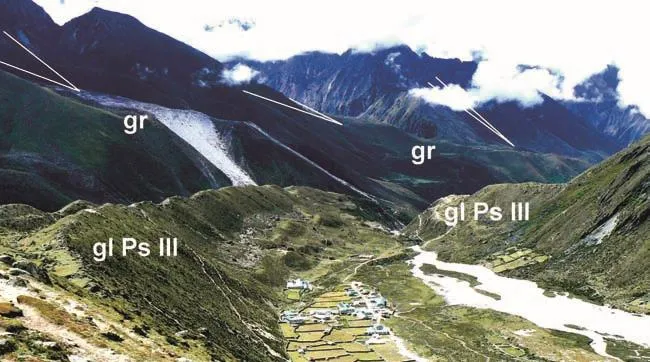
Figure 4 Moraines and pseudo-moraines of the Himalayas (in the valley of the Khumbu River). gr: pseudo-moraines[pseudo-moraines are represented by delapsive (landslide-like) gravitational formations]; gl PsIII: Late-Pleistocene moraines. Arrows indicate the area and direction of slumping of polygenetic slope detritus which formed pseudo-moraines
In order to more accurately differentiate moraines from pseudo-moraines, it is important to assess the genetic features of these sediments by investigating their quantitative facial-lithological indicators (geochemical and granulometric) (Shatravin, 1994a,b). Application of this methodology in the Tien-Shan and Pamir mountains allowed us to determine that only Pleistocene glaciation had existed in these areas and this had taken place in the Late Pleistocene.
Our research identified autochthonous glacio-chionophilous(special glacial) finely-dispersed organics disseminated in fine-grained moraine material, which showed potential for use as organic matter for theradiocarbon dating of moraines.Our methodologies represent a new and unconventional approach for radiocarbon dating of moraines, allowing researchers to more accurately identify the age of moraines(Shatravin, 1998, 2007b). This approach was previously applied successfully for the dating of Holocene moraines in the Tien-Shan Mountains (Shatravin, 2007a, 2012; Shatravinet al., 2011a). In order to further test the robustness of this methodology, two separate radiocarbon analyses were carried out on the same moraine material using traditional radiometric facilities at two independent laboratories: the Laboratory of Geochronology at Saint Petersburg University in Russia, and the Viennese Atomic Institute in Austria. Good repeatability of results was observed through this process,suggesting that this method of utilizing dispersed organic material for radiocarbon dating of moraines is viable.
It should be noted that although this methodology has proven to be successful, obtaining suitable samples is time-consuming and challenging. To obtain suitable samples it is necessary to excavate a moraine to a depth of several cubic meters (Figure 5). Although this may pose challenges, it is a necessary component of this technique for dating moraines.

Figure 5 Sampling for radiocarbon dating of fine-grained morainic material
In Holocene moraine-glacial complexes we found morphologically evident stages of Holocene glacial degradation in the Tien-Shan, Pamir, and Himalaya mountains (as shown in Figures 6–10). In these areas, no less than seven main stages may be distinguished (Shatravin,2007a, 2011a,b, 2012; Mamatkanovet al.,2010). Also their exact extents and boundaries remain need to be determined.

Figure 6 Morphologically evident stages of moraines (I–VII) in the Tez-Ter moraine-glacial complex (basin of the Ala-Archa River in the northern Tien-Shan Mountains)
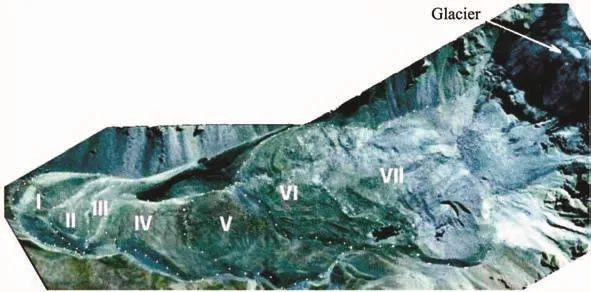
Figure 7 The same location shown from satellite imagery
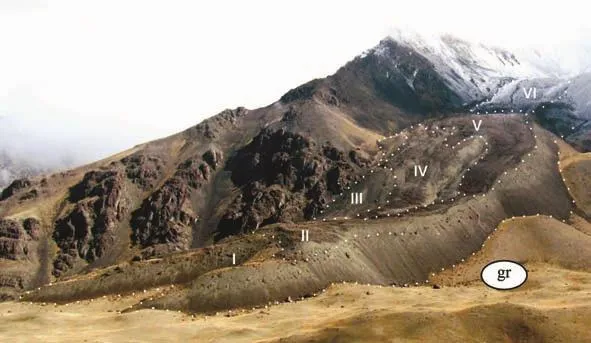
Figure 8 Stadial (I–VI) generations of the moraine-glacial complex in the valley of the Altyn-Dara River(northern Pamir Mountains). The seventh stage is not visible

Figure 9 Stadial (I–VII) generations of the Holocene moraine-glacial complex of the Duw Glacier (Himalayas)
Moraines of small glaciers, mainly corrie glaciers, are the most appropriate for radiocarbon dating of Holocene moraines and paleoglaciological reconstructions. Small glaciers are often located far away from the main center of glaciation in most mountain ranges, and therefore are more sensitive to climatic changes, engraving such changes in the form of stadial moraine shafts.
The following radiocarbon dating results were sourced from the first three stadial moraines of Holocene glaciations at one of the moraine-glacial complexes in the Tien-Shan Mountains (Figure 10). These stadial moraines were determined to date from 8,000, 5,000, and 3,400 years ago(Shatravin, 2007b, 2012; Mamatkanovet al., 2010). On the basis of these data, we hypothesized that the stadial degradation of the Holocene glaciation in the Tien-Shan Mountains(Figure 11) took place according to the principle of damped oscillations (Shatravin, 2007b, 2011a,b, 2012; Mamatkanovet al., 2010).

Figure 10 Stadial moraines (I–V) of the Holocene moraine glacial-complex of the corrie type in the basin of the Turgen-Aksuu River (northern Tien-Shan Mountains), with sampling areas for radiocarbon dating identified
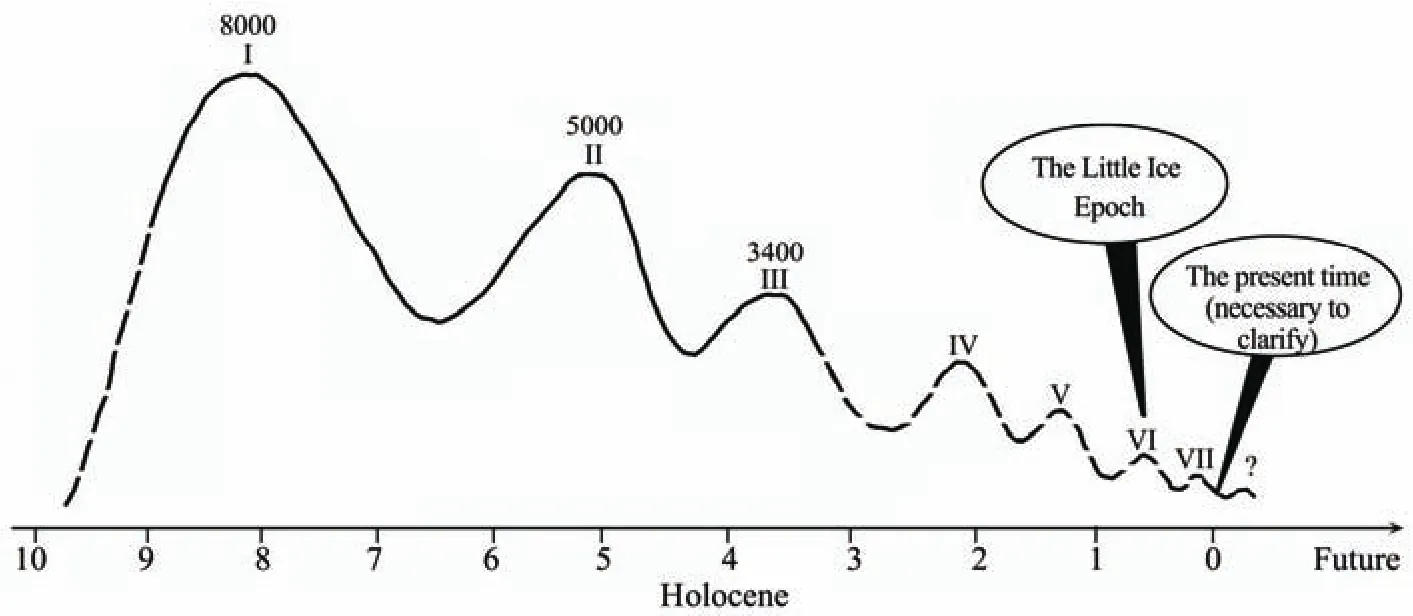
Figure 11 Schematic model of the Tien-Shan glacial degradation in the Holocene. The horizontal axis represents the time scale (thousands of years); I–VII are the glaciation stages relevant to morphologically expressed moraines of the Holocene glaciations; 8,000, 5,000, and 3,400 years ago are determined years of stadial moraines; "?" estimated next stage of glaciation
The final line in Figure 11 (located beyond the zero age mark) was extrapolated by forecasting, taking into account past observed regularities. This point is of greatest interest in the context of long-term forecasting of glacial and climate change because, based on its amplitude, it may be possible to draw conclusions about possible future periods of glaciations, not only for the Tien-Shan Mountains but also for the whole central Asia region. The dating of the other stadial moraines is a way to produce long-term forecasts of glacial and climatic changes, and may serve as a basis for the accurate long-term assessment of the anthropogenic impacts on glacial and climatic changes in central Asia.
However, this scheme requires significant improvement by undertaking further analysis and dating of other stadial moraines of the Holocene glaciations. For a more detailed paleoglaciological reconstruction of Holocene glaciations,radiocarbon dating should be combined with isotope-oxygen(based on the ratio of isotopes16О/18О) and isotope-uranium investigation of glaciers. The study of the isotope-oxygen ratio of glaciers has become popular among glaciologists,and these results are often used in paleoclimatic reconstructions and also in long-term forecasts. Accordingly, a number of mountains in the Eurasian region have been drilled for this purpose, including the Tien-Shan, Caucasus, Altai, Tibetan, and the Himalayas, as well as glaciers in Scandinavia and Antarctica. Despite the popularity of this method, it does have its limitations, particularly when attempting to determine the absolute age of ice cores.
Isotope analysis is performed with the use of ratio-based models that assess the age and depth of glacial thicknesses and are constructed based on the characteristics of flow(Bowen, 1981). The method of radiocarbon dating of moraines discussed in this paper allows researchers to date the historic isotope-oxygen temperature of past events using data obtained from the drilling of mountain glaciers. This method enables researchers to determine an approximate age scale for glacial moraines with improved accuracy. For this purpose, it is necessary to select a series of samples at the contact point of glacial ice and superficial (ablative) moraine coverings (Figures 12 and 13). Samples of ice are used for isotope-oxygen analyses and samples of autochthonic organic substance from moraines are used for radiocarbon dating.
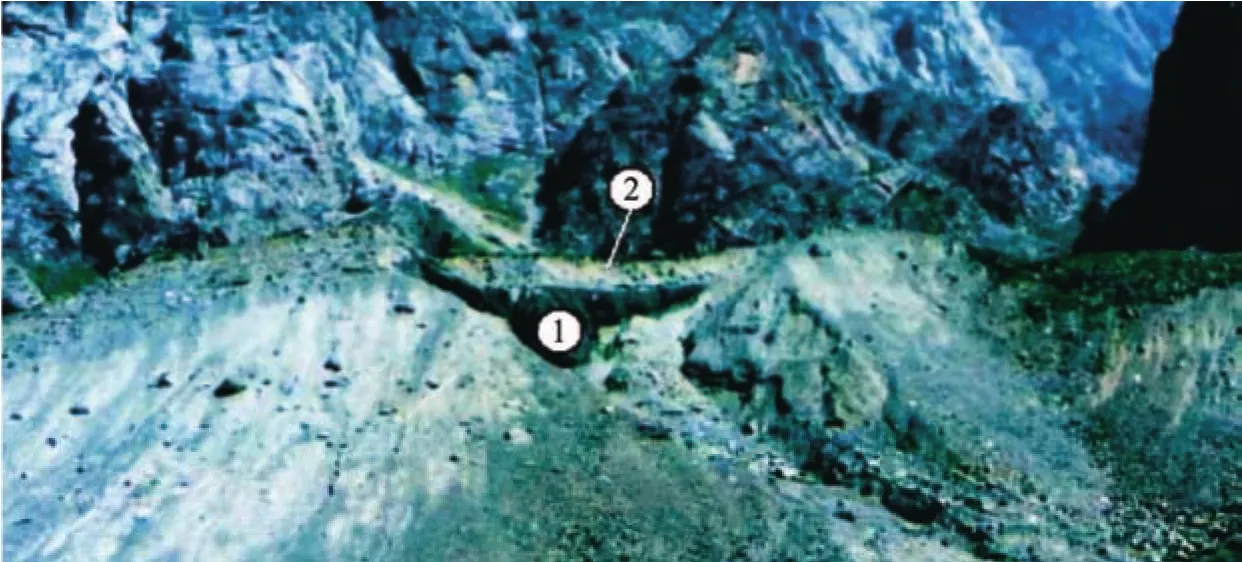
Figure 12 The frontal ledge of a Holocene moraine-glacial complex in one of the valleys in the northern Tien-Shan Mountains.1: outcrop of glacial ice; 2: ablative moraine
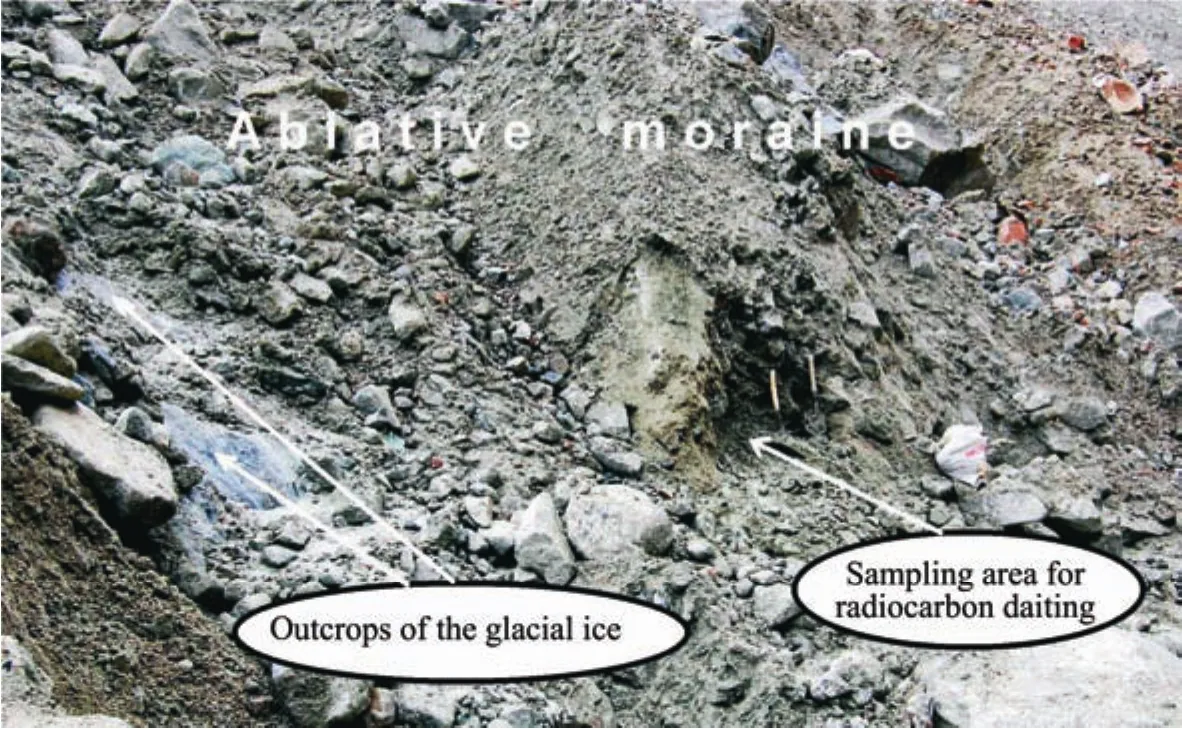
Figure 13 Outcrops of glacial ice in a Holocene moraine of the same moraine-glacial complex
Many glaciers in mountainous areas are becoming smaller and also becoming shielded as they are increasingly covered by glacial moraine. Both of these factors may lead to significant reductions in glacial runoff in the foreseeable future.During the first stage of glacial shielding (when the thickness of the moraine cover is insignificant), glacial melting accelerates and increases the module of runoff. As the thickness of moraine cover increases, this leads to a further reduction in ice melting, leading to its complete termination. Glaciers at this stage are like those shown in Figures 14 and 15.
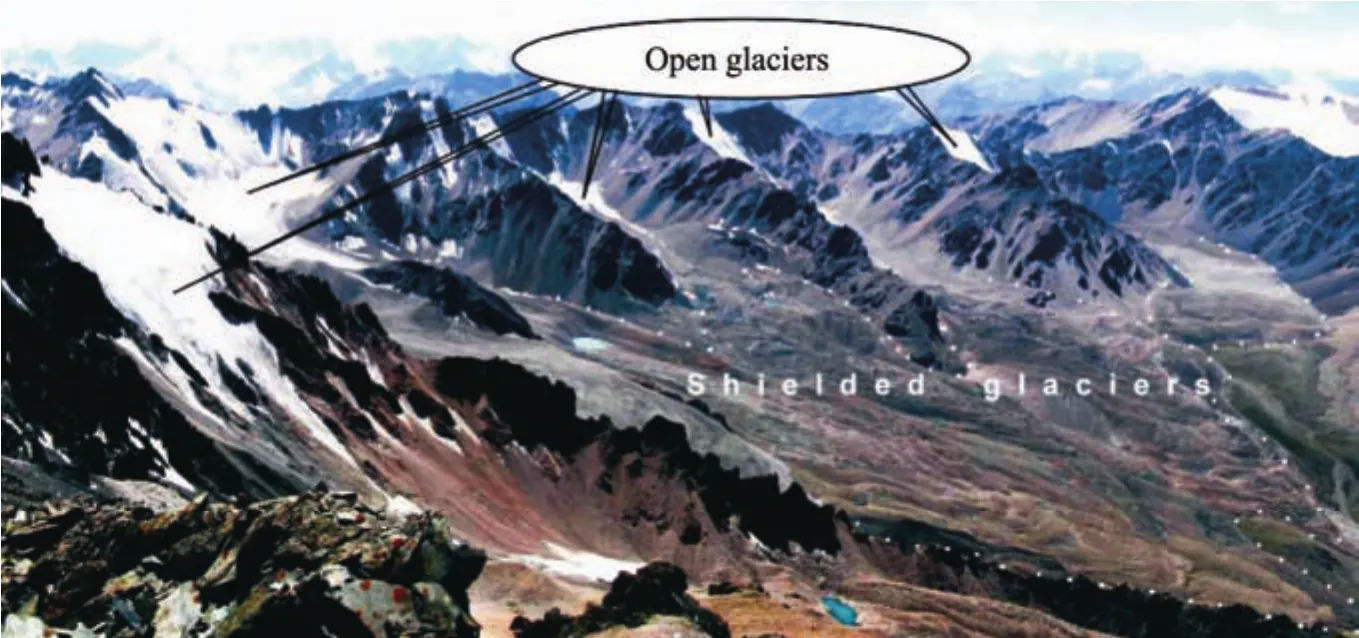
Figure 14 Typical open and shielded glaciers in the northern Tien-Shan Mountains (basin of the Sokuluk River, Kirghiz Range)
The shielding of glaciers is occurring at a very high rate in many areas. Figure 16 shows an example of shielding at the Ak-Say and Uchitel Glaciers in the Kirghizskiy Range of the Tien-Shan Mountains that has emerged in the past 40 to 50 years. Shielding occurs on small and middle-sized glaciers, and also on large glaciers such as the Inylchek(Tien-Shan), Fedchenko (Pamir), and the Khumbu and Imdja (Himalayas) (Figures 17–19).
It is necessary to make long-term forecasts, not only of glaciations but also of the shielding of mountain glaciers by moraines and the subsequent associated reduction of runoff,to determine how quickly modern glaciers will be subsumed by moraines in the future, and also which has a greater effect on glacial runoff—a reduction in glacier size, or their shield factor. These questions need to be investigated by studying shielding glaciers as well as the tendencies, speed, and future forecasts of shielding.
The glacial runoff from those parts of glaciers that are shielded is in contact with moraine deposits; this has been discussed (Tuzova and Shatravin, 1994; Tuzovaet al., 1994)and shown to lead to an increase of isotope shift in the uranium of glacial waters, that is, not only an increase of the general content of uranium in the thawed snow, but also an increase of excess234U in such samples. There is a need for further research using isotopic methods on open and variously shielded glaciers. It will be necessary to study modern representative moraine-glacial complexes to enable future forecasts to be developed. It is also important to differentiate the morphologically evident stadial moraine-glacial generations in these samples and define the respective shares of actual glacial runoff and runoff from variously shielded moraine-glacial generations.
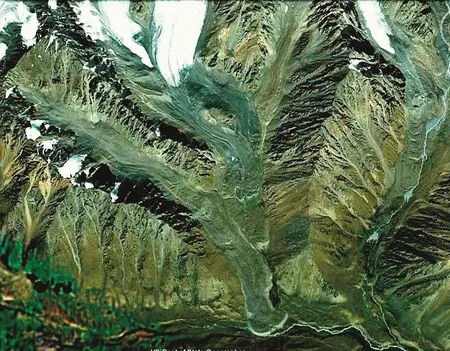
Figure 15 Shielded (black) and open (white) parts glaciers in the valley of the Chon-Ak-Suu River(Kungey-Ala-Too Range, northern Tien-Shan Mountains)
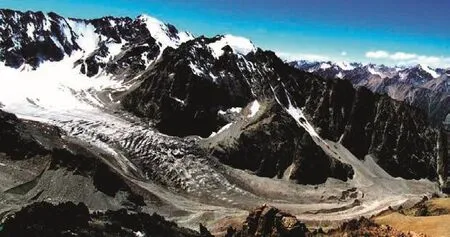
Figure 16 Significant parts of the Ak-Say Glacier (Kirghiz Range, northern Tien-Shan Mountains)are shielded by ablative moraine

Figure 17 Shielded (black) and open (white) parts of the Inylchek Glacier (central Tien-Shan Mountains).The length of the glacier is 57 km

Figure 18 Shielded (black) and open (white) parts of the Fedchenko Glacier (central Pamir Mountains).The length of the glacier is 78 km
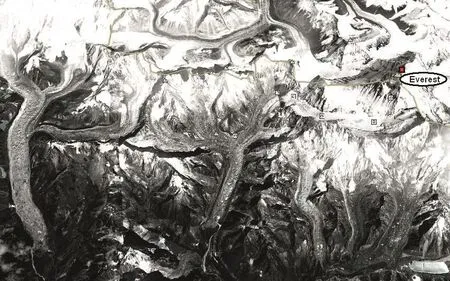
Figure 19 Shielded (black) and open (white) parts of Himalayan glaciers in the area of Mount Everest (8,848 m)
3 Discussion
There are an increasing number of reports discussing the rapid degradation of glaciers in central Asia. According to reports of Arctic and Antarctic Research Institute(http://www.climatechange.ru/node/119) "Himalayan glaciers are thawing at a rate of 10–15 m/a and two thirds of the glaciers in China will have disappeared by 2060, and by 2100 the remaining glaciers will have melted completely".According to the Second National Statement of the Kyrgyz Republic on UN Climate Change Framework Convention(2006), the quantity of glaciers in the Tien-Shan Mountains,located in the Kyrgyz Republic, may be reduced by as much as a factor of 10 by 2100; however, only exposed parts of the glaciers were considered in this estimation. It can thus be assumed that the forecast of glacial reduction may be overstated. To obtain a more objective picture it is also necessary to study shielded glaciers, including their historic-genetic aspect, with the use of modern isotope methods.
There are no separate Holocene glaciers or moraines in the Tien-Shan Mountains, but there are moraine-glacier complexes. Figures 12, 13, and 20 depict outcrops of glacial ice in moraine-glacial complexes of the Tien-Shan and Himalayas.These complexes contain significant quantities of ice in the form of ice bodies shielded by moraine covers. Ice bodies in moraine-glacial complexes are essentially preserved stocks of ice which release water at a slower rate of melting than do exposed glaciers. The runoff rate from these glaciers is fairly steady during all seasons of the year. Figure 21 shows the Holocene moraine-glacial complex of a glacier at Karabatkak Lake, which is currently being studied by the Tien-Shan High Mountain Research Center (TSHMRC) under the direction of the Institute of Water Problems and Hydro Power of the National Academy of Sciences of the Kyrgyz Republic(IWP&HP NAS KR). Area in the foreground of Figure 20 are not moraines, but glacial bodies of different age generations shielded by ablative moraines. They (and others similar to them in different cases) are not listed in the catalog of glaciers of the Tien-Shan (Catalog of USSR Glaciers, 1967), where only parts of glaciers marked in Figure 1 were included.
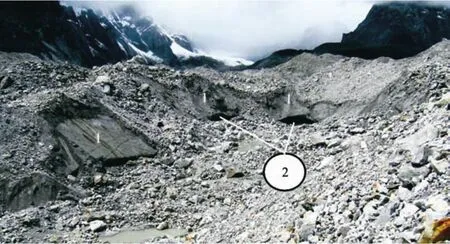
Figure 20 Ice outcrops. 1: under an ablative moraine at the tail end of the Changri Shar Glacier (Himalayas);2: channels of intra-glacial runoff
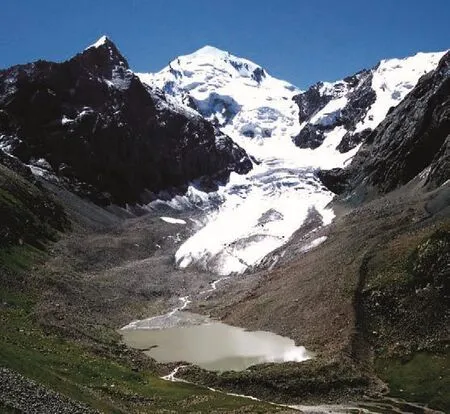
Figure 21 Moraine-glacial complex of the Karabatkak Basin of the Chon-Aksuu River (northern Tien-Shan Mountains)
To make long-term forecasts of glacial shielding and the reduction of glacial runoff it causes, it is necessary to conduct uranium-isotope research on the moraine-glacial complexes together with morphological studies and radiocarbon dating. This would rely on the features of glacial lithogeneses and formation of moraines of mountain glaciers that we previously identified, wherein organic matter in the form of glacio-chionophilous microorganisms inhabiting glaciers play decisive role (Shatravin, 1994b). This organic matter, as well as any other organic substance, absorbs uranium and its isotopes. Uranium-isotopic investigations will allow researchers to determine generations of different ages in Holocene moraine-glacial complexes and to determine the respective shares of each component in the general runoff of mountain rivers, including the runoff from both the exposed and shielded parts of glaciers.
4 Conclusions
In order to reliably differentiate moraines from pseudo-moraines, we analyzed quantitative facial-lithological data(granulometric and geochemical characteristics), which allowed us to eliminate the sources of past numerous contradictions related to the paleoglaciology of the Quaternary period.As part of this study we developed a method for obtaining reliable radiocarbon dating of moraines with the use of autochthonous organic matter dispersed in fine-grained morainic material, and isotope analysis. Using samples obtained in the Tien-Shan, Pamir, and Himalaya mountains we found that Holocene glaciations disintegrate stadially according to the decaying principle, and seven main stages may be distinguished. We achieved the absolute dating of the first three stages, identifying these periods as 8,000, 5,000, and 3,400 years ago. On this basis we constructed a schematic model for long-term forecasting of natural glacial and climatic changes.We recommend the radiocarbon dating of the subsequent stages, using autochthonous organic matter and isotope analysis, to support the long-term forecasting of climate change and changes in glaciations. The further application of uranium-isotope and isotope-oxygenic researches on Holocene glaciers and moraines will allow researchers to improve this model, both in precision and detail. Collaboration between international researchers will be essential in refining this model and undertaking further research.
The work was conducted according to the program of the Institute of Water Problems and Hydro Power of National Academy of Sciences of the Kyrgyz Republic. Author expressed thanks for the Institute of Water Problems and Hydro Power, NAS KR.
Bowen D, 1981. Quaternary Geology. Mir Publishers, Moscow.
Catalog of USSR Glaciers, 1967. Parts 1 and 2. Science, 13(2), Leningrad.
John B, Derbishir E, Young G, Feibridge Р, Andrews J, 1982. Winters of Our Planet. Mir Publishers, Moscow.
Mamatkanov DM, Shatravin VI, Tuzova TV, 2010. What prevents long-term forecasting of climate and glaciation? In: Collected Papers No. 65, Ministry of Science and Education of Georgia, Institute of Water Management. Tbilisi, Georgia, pp. 59–163.
Shatravin VI, 1994a. Facial-lithological typification of main genetic generations of Quaternary deposits of high-mountain zones. In: Geology of the Cenozoic and Seismotectonic of the Tien Shan. Ilim Publishers, Bishkek,Kyrgyzstan, pp. 3–15.
Shatravin VI, 1994b. General regularities of glacial and gravitational types of lithogenesis of mountainous areas. In: Geology of the Cenozoic and Seismotectonic of the Tien Shan. Ilim Publishers, Bishkek, Kyrgyzstan,pp. 15–26.
Shatravin VI, 1998. Radiocarbon dating of "dumb" layers of the Quaternary deposits. In: Karpinsky AP (ed.). The Main Results in the Studies of the Quaternary and the Main Directions of Studies in the 21st Century.Proceedings. All Union Consultations All-Russian Institute of Geological Research (VSEGEI), Saint Petersburg, pp. 55–56.
Shatravin VI, 2007a. Reconstruction of Pleistocene and Holocene glaciations in the Tien-Shan from new starting positions. In: Climate, Glaciers and Lakes: Journey to the Past. Ilim Publishers, Bishkek, Kyrgyzstan, pp.26–46.
Shatravin VI, 2007b. Radiocarbon dating of moraines with the use of dispersed organics. In: Climate, Glaciers and Lakes: Journey to the Past.Ilim Publishers, Bishkek, Kyrgyzstan, pp. 74–92.
Shatravin VI, 2012. Establishment of regularity of disintegration of the Holocene glaciations through radiocarbon dating of dispersed organic matter from moraines. In: Andean-Asian Mountains Global Knowledge Exchange on Glaciers, Glacial Lakes, Water & Hazard Management. Field Expedition to Imja Glacial Lake, September 3–24. ICIMOD, Kathmandu,Nepal, pp. 123–125.
Shatravin VI, Tuzova TV, 2010. New starting positions in paleoglaciological reconstructions in long-term forecasting of Eurasia glaciation and climate.In: Collected Papers No. 65, Ministry of Science and Education of Georgia, Institute of Water Management. Tbilisi, Georgia, pp. 240–244.
Shatravin VI, Tuzova TV, 2011a. Long-term forecast of glaciation and evaluation of glacial resources of central Asia with use of isotopic methods.In: AASA Regional Workshop on "The Roles of Academies of Sciences in Water and Energy Problems in Central Asia and Ways for Their Solution." NAS KR, Bishkek, Kyrgyzstan, pp. 85–90.
Shatravin VI, Tuzova TV, 2011b. Long-term forecast of glaciation and evaluation of glacial resources of central Asia with use of isotopic methods.Journal of Izvestiya of the National Academy of Sciences of the Kyrgyz Republic: Series of Physics and Technical, Mathematical, Mining, and Geological Sciences, NAS KR, Bishkek, Kyrgyzstan, 2(4): 24–27.
Shnitnikov AV, 1957. Variability of general humidity of Northern hemisphere continents. Western Geological Community of USSR. Novaya seriya, pp.16–334.
Solomina ON, 1999. Mountain Glaciations in Northern Eurasia during the Holocene. Nauchnyi Mir, Moscow.
The Second National Statement of the Kyrgyz Republic on UN Climate Change Framework Convention, 2006. NAS KR, Bishkek, Kyrgyzstan.
Tuzova TV, Romanov VV, Vlasova LV, 1994. Uranium and tritium in glacial lakes of the northern Tien-Shan. Water Resources, 21(2): 236–239.
Tuzova TV, Shatravin VI, 1994. Specificities of formation of isotope composition of uranium in ice and waters of high-mountain cryolithogenesis.Journal of Izvestiya of Academy of Sciences of the Kyrgyz Republic,NAS KR, Bishkek, Kyrgyzstan, 3(4): 55–59.
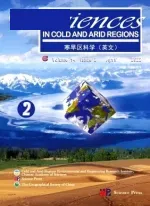 Sciences in Cold and Arid Regions2013年1期
Sciences in Cold and Arid Regions2013年1期
- Sciences in Cold and Arid Regions的其它文章
- G-WADI––the first decade
- G-WADI PERSIANN-CCS GeoServer for extreme precipitation event monitoring
- Water use efficiency in an arid watershed: a case study
- Wavelet analysis of the hydrological time series of Dalai Lake, Inner Mongolia, China
- Time-series analysis of monthly rainfall data for the Mahanadi River Basin, India
- Precipitation-runoff simulation for a Himalayan River Basin,India using artificial neural network algorithms
